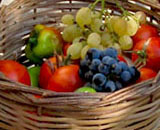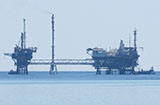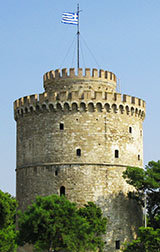Macedonia, the largest of Greece's regions, stretches across the north of the country from the neighbouring regions of Epirus in the west to Thrace in the east. To the south it is flanked by Thessaly, and to the north it borders with Albania, the Republic of North Macedonia
[1] and Bulgaria.
See the interactive map of Macedonia below.
The modern political region, the semi-autonomous Region of Macedonia, is divided into 3 smaller regions: West Macedonia; Central Macedonia; East Macedonia and Thrace. My Favourite Panet features the Greek part of Thrace, usually known as Western Thrace (Eastern Thrace being the European part of Turkey), in a separate section of this website: see Thrace and Alexandroupoli, Thrace.
The fertile hills and plains in the southern part of Central and Eastern Macedonia end in the northern Aegean Sea with long stretches of beaches and river mouths. The rivers are fed by the mountains to the north and west of the region, which include Mount Olympos (the home of the gods) and the Rodopi range. The wild, mountainous areas in the northwest, around Kozani, Florina and Kastoria are dotted with lakes, forests and isolated villages.
| |

Macedonian garden produce |
| |
| |

Macedonian oil rig in the
North Aegean, between
Kavala and Thasos. |
Northern Greece has a lot more rainfall than the south, where in the Cyclades and Dodecanese it may not rain at all between June and September. The combination of mild climate, plentiful water (from rain, as well as rivers and lakes fed from the mountains), soil and topography mean the farmlands of Macedonia, particularly in lowland Central and Eastern Macedonia, are some of the richest in Greece. A variety of cereals, beans, fruit (delicious peaches), vegetables are grown here as well as rice, tobaccco and cotton. Even a glimpse of some people's gardens may convince you that just about anything can be grown here.
The region's main industries are food processing, the production of textiles and tobacco products, wine, and other alcoholic drinks (including the local spirit tsipero) and tourism. Mineral resources are also exploited here: stone quarries for road building and cement production, marble (famously the pure white marble of Thasos), gold, silver and other minerals in Chalkidiki and offshore oil. Many of these industrial enterprises, especially the gold mining, are controversial because of their environmental and economical implications: arsenic and other chemicals used to extract the gold from the ore are said to pollute the ground water and sea, and whole mountains are destroyed to provide gravel for motorways. [2]
Tourism is by no means as intensive as in southern Greece, and the region generally attracts family holiday-makers from Germany, central and eastern Europe, neighbouring Balkan countries and of course from Greece itself. Many Greeks from Thessaloniki and inland towns have their holiday homes along the coast. The major tourist areas are Thessaloniki, and the beach resorts of the Chalkidiki peninsula, the Aegean coast around Stavros and Asprovalta, Thasos island and around the north of Mount Olympos. Few tourists venture into the interior of Macedonia, except on organized tours of historical and picturesque sites such as Pella, Veria, Vergina, Stageira, Amphipolis, Philippi, Dion and Kastoria.
It has often been said that the atmosphere and culture of Macedonia and Thrace are more Balkan than Greek, which has a lot to do with the landscape, climate, architecture and the ethnic mix, particularly in the north and west where a variety of Slavs, Vlachs, Albanians and Roma have lived for centuries, as well as ethnic Greeks who moved here, often as refugees, from Turkey, Bulgaria, Romania and other parts of the Greek diaspora during the 20th century. Macedonia's geographical position on strategic land and sea routes between Europe, the Aegean and Asia has assured it a long, eventful and often turbulent history from which a distinct - and eclectic - Macedonian culture has emerged.
| |

Lefkos Pirgos
(White Tower),
Thessaloniki |
The urban as well as the rural landscapes vary around the region. Macedonia's capital and largest city Thessaloniki (Greece's second largest city) is a lively, bustling sea port, but not nearly as hectic as Athens. The streetlife and nightlife are as attractive to many visitors as the architectural reminders of Roman, Byzantine, Ottoman and Jewish life here. Elsewhere, the attractions are approximately proportionate to the size of the town. That goes for the hustle-bustle too. Second city Kavala is an attractive seaside town well worth at least two days of exploring by foot, for example on the way to or from Thasos. This island is open, easy-going and popular, in contrast to the other nearby isle of Samothraki, which is literally more insular in character. Edessa and Kastoria are also very different, but both cities were built at spectacular locations associated with water: clifftop Edessa has its dramatic waterfalls, and Kastoria sits on a peninsula jutting into a lake. Other cities, such as Serres and Drama, have a distintly agricultural market town feel.
We could go on and on about the natural beauty and manmade wonders of Macedonia and why it is well worth visiting and exploring. We have been doing just that over the last sixteen years, and will be publishing further results of our searches and researches in words and pictures, as time goes by...